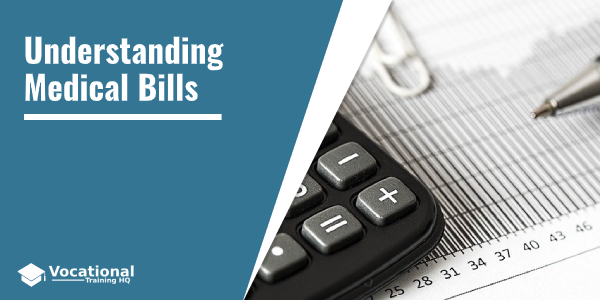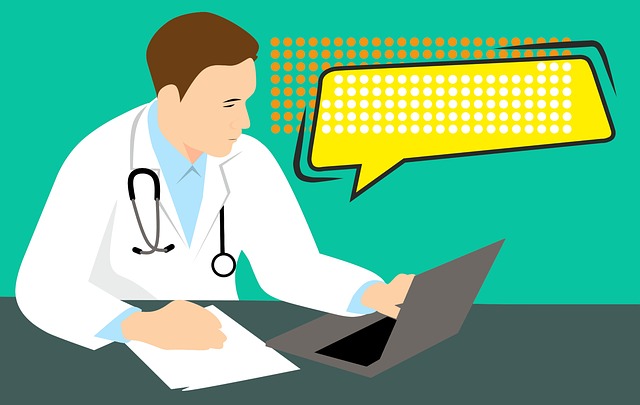Medical billing can be an extremely complicated process.
According to a 2016 public opinion survey by Copatient, approximately 72% of Americans are confused by their medical bills, while 94% have received bills that they found “too expensive”.
Even with insurance or Medicare coverage, you may find unexpected fees because of the odd procedural codes, insurance adjustments, or a great deal of medical jargon.
In this article, we aim at helping you navigate the medical billing from the first contact with a healthcare provider for an appointment and to after you receive the bill.
We will explore how the prices for services are set and how to negotiate charges with your insurer.
Also, we will show you how to determine and dispute huge charges on your bill.
Article Table of Contents
What Medical Bills Really Cover
Fees may seem unreasonable when you receive the bill after your appointment or ask for an estimate from your insurance company.
However, several factors determine how hospitals, physician offices, and other facilities determine the cost of their services.
If you can, contact your insurer for a cost estimate for various local healthcare providers.
You may notice that the fees for the same services vary.
Professors Robert Kaplan and Michael Porter of Harvard Business School explain in their op-ed “Why Medical Bills Are a Mystery” in the New York Times that providers set costs based on what they charge but not on the cost of the resources, such as equipment and personnel.
Here is what hospitals and medical officers consider when negotiating with insurance companies on the costs that go in the bill:
- Facility capacity.
The capacity growth of a hospital is a factor that the National Institute for Health Care Management (NIHCM) considers.
This is because the number of beds in a hospital can influence the fee-for-service system charges in a hospital.
With more beds, hospitals can provide certain medical services.
According to the NIHMC, with higher system capacity, the competition among suppliers increases while decreasing the pressure on prices. - Supply and demand.
What’s the availability of the services you need?
Are there many hospitals with high capacity or physicians’ offices in the area that can provide the service?
Or is there a limited number of specialists?
In his open-source book, the Joy of Economics, Dr. Robert Stonebraker explains that firms that face zero or little competition can raise prices above the actual cost of service.
The power of monopoly can drive the prices in medical care up, just like it would happen in other areas, like restaurants or retail. - Hospital reputation.
The reputation of a hospital greatly affects how patients use the facility, which influences the cost and demand.
However, according to the Agency for Healthcare Research and Quality, the quality scores of the clinic contributed less to the hospital choice compared to the reputation of the hospital.
It can boost business and impact costs.
But you shouldn’t consider the reputation only as an indication of quality and performance. - Charge Description Master lists (CDM).
This is a master list of the service cost and billing codes used by medical billing professionals when creating claims as health officers calculate the bill to patients and insurance companies.
Each facility has its own chargemaster list.
It is recommended by the American Health Information Management Association (AHIMA) that CDM prices are maintained by chargemaster committees that monitor such responsibilities as reviewing all charged amounts for appropriateness by the payer.
Medical coding and billing professionals handle the process from the moment you make an appointment to the point when you receive the bill.
Most patients are unaware of the negotiations that take place between healthcare providers and insurance companies.
Understanding some back and forth can lift some mystery of the billing and insurance processes.
How the Billing Cycle Works
- You get in touch with a healthcare provider.
You pre-register and give them some basic information, such as insurance information and identification.
Then, you make an appointment.- You should ask the provider about the supplies and services you will receive.
If you are not sure about what you’ll be charged or what will be covered by insurance, ask for the procedure codes. - Then, contact the insurance company to see if your plan covers these services.
If it does, ask for the estimate of the cost of services with your health insurance. - If the cost is too much, ask your insurance provider if there are any other providers in your area that charge for the same services less.
- You should ask the provider about the supplies and services you will receive.
- The healthcare provider will contact your insurer to confirm:
- Preauthorization.
Some insurers require preauthorization before they cover medication or medical services.
They collect information about your appointment and medical records before they decide whether the medications and services will be covered. - Co-pay.
The office of the healthcare provider also determines what the patient will be charged for the visit.
- Preauthorization.
- On the appointment day, you will complete additional registration paperwork and include your valid ID, insurance card, insurance group number, and policyholder name.
Through the registration process, healthcare providers can:- Update your electronic medical records; if you have pre-existing conditions, it can influence the coverage decision.
- Gain your consent to perform certain procedures.
- Inform you of care liability and risks.
- Provide you with privacy policy information.
- Inform you of patient financial responsibilities.
- Determine your advanced directive preferences, which will give healthcare providers clear instructions if you are unable to speak for yourself.
- After you received medical services, medical coders will identify them all along with supplies and prescriptions received at your appointment and update your records with appropriate codes.
- Using these codes, the healthcare provider will create an insurance claim.
They submit file 837 to your insurance company.
This is the standard file format established by the Health Insurance Portability and Accountability Act (HIPAA), which allows your healthcare provider and insurer to communicate securely. - A claim processor working with your insurance company will review the claim and verify that the treatment is included in your coverage benefits.
They may contact you or your healthcare provider for additional information about the received services and/or supplies.
Then, they decide if the claim is valid and either accept or reject it. - The claim processor will contact your healthcare provider with the decision on the status.
If the claim is valid, the insurance company compensates the provider for some or all services you received.
If it’s rejected, the billing office will receive a detailed description of the reasons why the services aren’t covered. - You are billed for the remaining balance by the healthcare provider.
Note, if you are 65 and older, you can receive federal health benefits through Medicare.
This is a social insurance program that is significantly different from private health insurance in terms of billing.
Instead of negotiating prices with a healthcare provider as private companies do, they publish set fees for services.
If you are enrolled in Medicare Part B, to determine the set price for the services, your healthcare provider will have to consult with the Medicare Physician Fee Schedule (MPFS).
How to Read Your Bill
When you receive a bill from your healthcare provider, you will see a lot of different components there that may be unclear.
Most patients may find the codes, prices, and descriptions in the bill confusing.
Below, we will explain all the elements found in your bill more in-depths.
Don’t confuse the medical bill with the Explanation of Benefits (EOB), which is an insurance report that we will cover later.
- Statement Date:
It is the date when the bill was printed. - Account Number:
This is your unique account number.
If you have any questions about your balance and bills, you need to give this number when you contact the billing office of your healthcare provider.
This number is also usually used if you pay the bill online. - Service Date:
This is the date when you received each medical service. - Description:
This is a brief explanation of the services and supplies you received. - Charges:
This section includes the full price for the services and/or supplies you received before the insurance coverage. - Billed Charges:
This includes the total amount charged either to you or your insurance provider. - Adjustment:
This section includes the amount that the healthcare provider agreed not to charge. - Insurance Payment:
This is the amount already covered by your insurance provider. - Patient Payments:
This includes the amount that you have to pay. - Balance/Amount Due:
The amount owed to the healthcare provider. - Payable to:
The organization to which you have to address check payments.
Your bill may also include a “service code”.
To identify the exact services and supplies that you received during your appointment, healthcare providers use a standardized Healthcare Common Procedure Coding System (HCPCS) or Current Procedural Terminology (CPT) codes.
The coding protocol is used inside the organization, so your bill may not include it.
What is an Explanation of Benefits (EOB)?
An EOB is a document the insurer sends to insured individuals after a claim was submitted by a healthcare provider.
It includes the medical services and treatments that the health insurance company agreed to pay for and which services the patient has to pay for.
EOB means an explanation of benefits.
It is different from a medical bill.
However, it may show a balance due and look similar.
If the EOB states that the money is still owed to the healthcare provider, patients can expect to receive a separate bill from the healthcare provider’s office.
In this case, payment should go directly to the provider, not the insurer who sent the EOB.
The EOB aims at informing consumers of healthcare expenditures and costs.
With it, customers can also double-check that the services are billed right.
So, the EOB contains the following:
- Member Information:
This is the full name and ID number of the health insurance member. - Patient Account Number:
The unique ID number healthcare provider uses to track your account. - Provider Name:
The name of the physician’s office, hospital, or another facility or professional you visited. - Claim Number:
This is the unique ID number your insurance provider uses to track your account. - Date of Service:
The date when you received medical procedures, services, or supplies. - Service Code:
The identification of the specific services, supplies, or procedures you received. - Total Amount:
The full cost of the services, procedures, or supplies. - Not Covered:
The amount that your health insurance not covering, so you are responsible for it. - Reason Code Description:
The code that provides your information about why the insurer does not cover a charge. - Covered by Plan:
The total amount that your health insurance provider saved you. - Deductibles and Copayments:
This includes the added adjustments which are based on copay and deductible features of your insurance plan. - Total Net Payment:
This is the full amount that your insurer paid to your healthcare provider. - Total Patient Responsibility:
The total amount you have to pay the healthcare provider. - Check Issued:
This is the detailed record of the payment going from your insurer to the healthcare provider.
It typically lists the name of the payee, check amount, and check number.
Dealing With Billing Errors
The medical billing process involves several parties – you, your healthcare provider, and your insurer.
So, mistakes can be made.
A medical coder might describe your care history with an inaccurate code, or medical biller may have a mistyped value, etc.
Despite the reason for the error, it is essential that you, as a patient, track your bills and EOB forms.
If you notice charges that shouldn’t be there, contact your insurer or healthcare provider, or both, to dispute the error.
Identifying Errors
- Compare your final bill to estimates:
Before you make an appointment, contact your healthcare provider and ask for the billing code and cost.
Then, contact your insurer to ensure that the procedure is covered by your plan and ask for an estimate on how much you will owe.
If the estimated cost is very different from the balance due you receive after the appointment, there might be an error. - Create a list of charges:
Make a list of services and supplies you received together with the corresponding charges.
In the future, it can help you identify the wrong charge if there’s any. - Duplicate charges:
If you notice that a charge is listed twice, most likely there was an error during data entry. - Beware of upcoding:
Upcoding is a criminal activity of fraudulently reporting the wrong diagnosis to profit.
Disreputable healthcare providers may use upcoding to charge a large amount of money from you or your insurer.
If a description of the procedure or code includes services you didn’t agree to, it might be upcoding. - Check indentifying information:
Ensure that your name and ID number are correct.
With an error in identification, the insurance coverage errors can occur.
Disputing Charges
- Get in touch with the healthcare provider’s billing office:
Talk you your healthcare provider regarding bill inaccuracies.
If an error occurred during the claim process, they can correct it.
Take notes of the time and date of your phone call as well as the billing representative. - Call your insurance company:
If you can’t resolve the error with the healthcare provider, get in touch with your insurer.
With them, you can file a formal appeal to dispute a charge.
They can also check your bill for signs of fraudulent activity by the healthcare provider. - Contact a credit-reporting agency:
Ensure that your disputed bills don’t affect your credit score.
While disputing charges, your healthcare provider may mark the bill as overdue, and that can affect your credit score.
Credit agencies can address the issues concerning credit scores if you are disputing charges.
Credit reporting agencies include TransUnion, Experian, and Equifax, and to submit credit complaints, get in touch with Federal Trade Commission Complaint Assistant.
Don’t be afraid to ask questions at the healthcare provider’s facility.
It is also essential to understand what your insurance covers.
Keep records of your medical bills and watch out for errors.
Read the full guide: How to Become a Medical Biller and Coder




